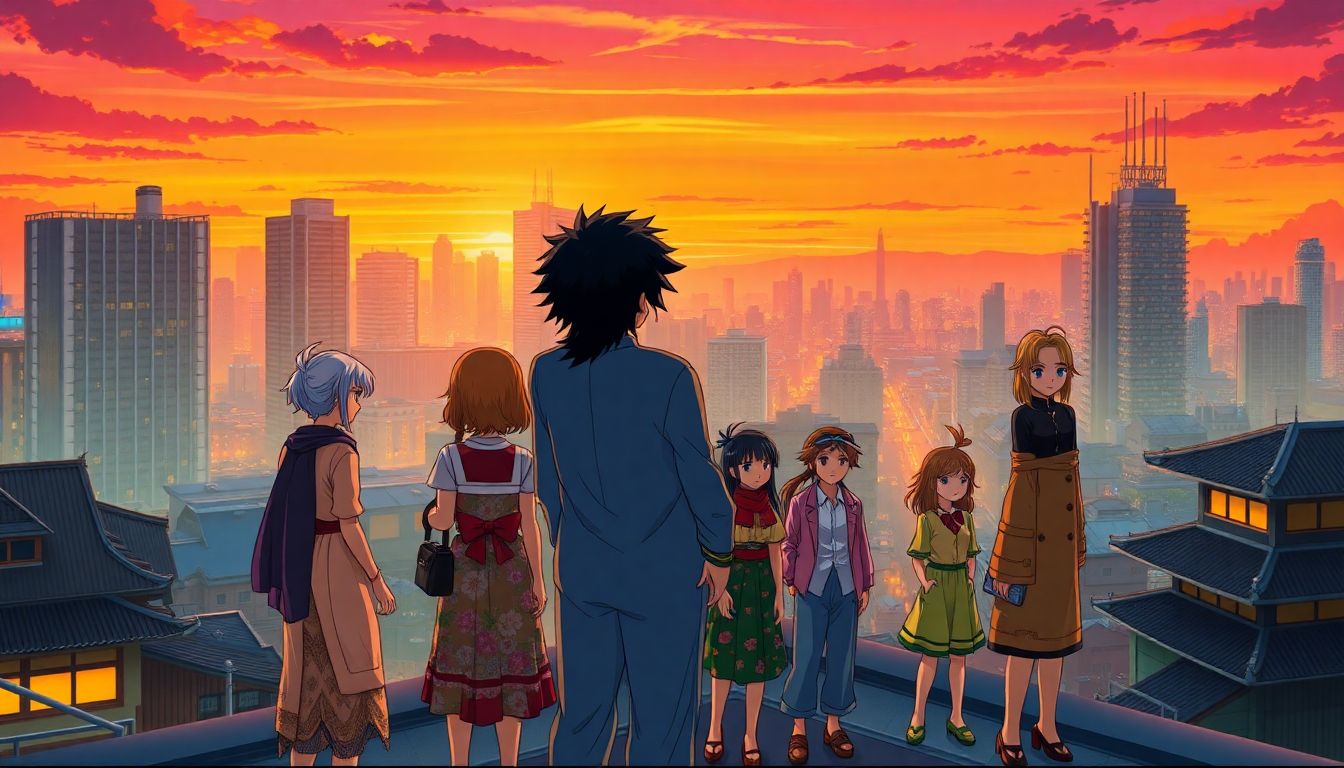
Introduction
Anime has become more than just cartoons from Japan—it's a worldwide cultural force. From kids to adults, generations have been touched by stories that go beyond simple entertainment. Some series stand out so much that they become part of our history, shaping how we see stories, characters, and even ourselves. These timeless anime have not only influenced fans but also set standards for how anime is made today. They hold a special place in our hearts and minds because of their lasting impact and universal appeal.
The Rise of Anime: Foundations of a Cultural Phenomenon
The Origins of Anime and Its Global Expansion
Anime began in the early 20th century, with simple animated films in Japan. It really started growing during the post-WWII era, especially in the 1960s with the debut of "Astro Boy." This series caught people's attention with its unique style and storytelling. As the decades passed, anime expanded worldwide, gaining fans in North America, Europe, and beyond. The 1980s saw a boom with hits like "Mobile Suit Gundam" and "Dragon Ball," marking the start of anime’s international fame.
The Role of Pioneering Series in Shaping the Industry
Early shows like "Astro Boy" and "Akira" pushed animation to new heights. "Akira," in particular, broke new ground with its detailed art and mature themes, appealing to older audiences. These shows helped define what anime could be—more than just cartoons. They set the bar for storytelling, animation quality, and emotional depth, inspiring future creators across the world.
The Influence of Cultural and Social Context
Anime often reflects societal issues, making them relevant and thought-provoking. During the 80s and 90s, many series touched on themes like war, pollution, and personal identity. These stories resonated with young minds, helping them connect with complex ideas through animated stories. As a result, anime became a mirror of society, showing us both its struggles and hopes.
Classic Anime that Defined a Generation
"Dragon Ball Z" and the Birth of Shonen Anime
"Dragon Ball Z" became a household name because of its epic battles and powerful characters. It turned action-packed anime into a global phenomenon. Kids and teens cheered as Goku fought to protect the universe, inspiring countless other shonen series like "One Piece" and "My Hero Academia." Its influence is clear in the way many newer series emphasize themes of perseverance and friendship.
"Pokemon" and The Rise of Anime in Mainstream Culture
Who hasn't heard of "Pokemon"? It took the world by storm in the late 90s, turning gaming, toys, and TV into a massive movement. Millions of kids started collecting cards and trading creatures. "Pokemon" helped anime jump into mainstream markets and showed that animated series could have broad appeal beyond Japan.
"Neon Genesis Evangelion" and Complex Narratives
"Neon Genesis Evangelion" redefined mecha anime with its deep psychological themes. Instead of just giant robots fighting, viewers got stories about depression, identity, and human connection. Critics praised its mature storytelling, and fans still debate its meaning today. It proved anime could explore complex, mature topics and still be commercially successful.
Other Notable Classics
- "Sailor Moon": Created the magical girl genre while empowering young girls with themes of friendship and bravery.
- "Cowboy Bebop": Blurred genres with its mix of sci-fi, jazz music, and gritty storytelling. It's often called one of the best anime for its cinematic feel.
Elements That Make Anime Timeless
Universal Themes and Relatable Characters
Anime often explores ideas like friendship, perseverance, and finding oneself—all things everyone deals with. Shows like "Naruto" or "One Piece" tackle these themes in ways that everyone can connect with. Characters who grow and face challenges keep fans invested, no matter their age.
Innovative Animation and Music
Many timeless series broke the mold with their art and sound. "Akira" was famous for its detailed visuals, while "Cowboy Bebop" featured a soundtrack that still gets played today. These elements make stories more memorable and emotionally powerful.
Cultural Significance and Nostalgia
Anime reflects society’s values, hopes, and fears. Nostalgia adds to their charm, reminding viewers of their youth or a different time. This emotional connection keeps these shows relevant long after their original airing.
The Impact of Timeless Anime on Today’s Industry and Fans
Influencing Modern Anime Creators and Trends
Many current hit series owe a debt to classics. "Attack on Titan" and "My Hero Academia" draw inspiration from the storytelling and character development of older shows. These timeless series set standards that shape how anime is made today, encouraging more ambitious stories and better animation.
Fandom, Conventions, and Online Communities
Fans worldwide celebrate their favorite series at conventions and online forums. Classic anime like "Dragon Ball" or "Sailor Moon" helped build strong communities that last for decades. These shared passions keep the culture alive and growing.
Tips for New Fans to Discover Timeless Anime
If you're new to anime or want to explore its roots, start with acclaimed classics like "Cowboy Bebop," "Neon Genesis Evangelion," or "Dragon Ball Z." Watch with an open mind and pay attention to what makes these stories special. You might find yourself hooked on their universal themes and timeless appeal.
Conclusion
Timeless anime are more than just entertainment—they are cultural landmarks. These series changed how stories are told through animation and influenced generations of fans and creators. Exploring these classics offers a glimpse into the roots of the vibrant anime world we see today. Dive into these stories, and you’ll understand why anime remains a powerful and enduring art form for everyone.


Comments ()